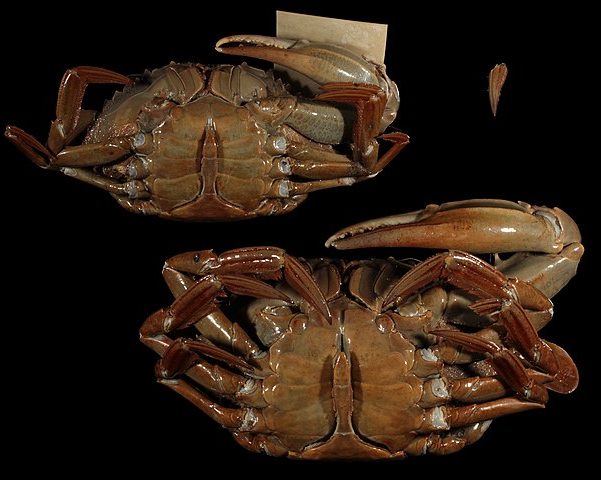Maryland’s and Virginia’s blue crab numbers on Chesapeake Bay in winter 2024 were at stable albeit lower levels than 2023’s.
There were an estimated winter 2024 population of 317 million blue crabs, according to a May 22, 2024 survey report. The Maryland Department of Natural Resources (DNR) alongside Virginia Institute of Marine Science have been conducting the Winter Dredge Survey since 1990.
Though a yearly drop of 6 million crabs, the survey’s 2024 estimate is way above 2022’s record low of 229 million.
At 133 million, less than 2023’s 152 million, the reproductive age female population still surpasses the management minimum of 72.5 million.
Notably, young crabs in the bay, which have averaged below management levels since 2019, rose in 2024 to 138 million.
Besides, the male population has only dropped by 6 million crabs, from 52 million in 2023 to winter 2024’s 46 million.
For now, the DNR team is focusing on further assessment to determine what influences blue crab increase or decrease.
According to Mandy Bromilow who manages the blue crab program at DNR, “…there are new analytical methods” that could still apply. Such methods could feature in the upcoming summer 2024 dredging survey in readiness for the March 2026 full assessment report.
Dredging is a method where biologists use high tech equipment to record hibernating blue crabs under the ocean floor’s mud. Surveyors in the winter survey of December through March visit 1,500 ocean sites in Chesapeake Bay to conduct the measurements.
Past surveys have found that the biggest natural blue crab threat are predator blue catfish. These blue catfish prey on juvenile blue crabs that use the saline environment of Chesapeake Bay as their nursery.
Pricing
Fishing is the one man made threat, particularly because these crustaceans bring higher rates than some shellfish. The average retail prices hover between $40 and 64 per pound versus dock prices of $12.5 to 34 per pound.
Most blue crabs sell by the dozen in the average size range of between 5 ounces and 16 ounces.
Indeed, blue crabs look their premium price with their showy bright blue claws and attractive olive green or brown domed shells.
Thus, as Chesapeake Bay’s blue crab numbers dip by just 2% in winter 2024, there is hope that assessment will bring sustainable solutions. Some of this assessment could include statistics such as the ones below.
U.S. Blue Crab Statistics
Blue crabs’ scientific name, Callinectes sapidus literary means “beautiful savory swimmer.” Though blue crabs generally weigh 1/3 pound, the largest ever recorded in American waters was 1.1 pounds. According to the National Oceanic and Atmospheric Administration (NASA), blue crabs are the most valuable seafood in Chesapeake Bay, Maryland. Outside the U.S., they live at the Gulf of Mexico, Nova Scotia in Canada, Tunisia and Argentina’s Atlantic coastline.
Since 2000, Maryland’s blue crab numbers have been lowest in 2001 at 254 million crabs and 2021 at 227 million. Maryland has been averaging $45 million in commercial revenue from blue crab fisheries between 2010 and 2020. Virginia, on the other hand, recorded earnings from blue crab fisheries worth $28 million in 2020.
